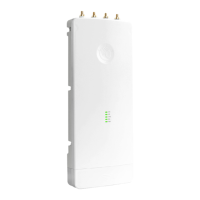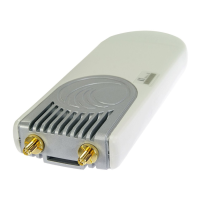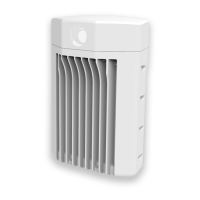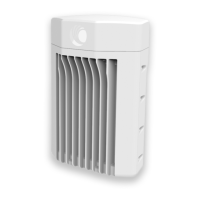CHAPTER 4: USING THE DEVICE
MANAGEMENT INTERFACE
PAGE 4-28
Downlink Max Rate
(Access Point
Mode)
Specifies the maximum downlink MCS value that the Rate Adapt algorithm will
choose for Radio 1. If an installation is exhibiting packet loss due to downlink
interference, modifying Downlink Max Rate to limit the device maximum MCS
rate may result in more reliable packet delivery. This is especially true in
installations among changing and unpredictable interference.
Max Tx Power
(Subscriber
Module Mode)
Auto: The Access Point can control, using ATPC (Automatic Transmit Power
Control), the TX power of the Subscriber Module up to the maximum capability
Manual: The Access Point can control the TX power of the Subscriber Module up
to the value configured in the Transmitter Power field.
Transmitter Output
Power (Subscriber
Module Mode)
The total transmit power of the radio interface. The device has four transmit
chains for each channel and total transmit power sums the power from all chains.
This does not include antenna gain. Transmitter Output Power may be limited by
regulatory rules for the country in use.
Uplink Max Rate
(Subscriber
Module Mode)
Specifies the maximum uplink MCS value that the Rate Adapt algorithm will
choose for Radio 1. If an installation is exhibiting packet loss due to uplink
interference, modifying Uplink Max Rate to limit the device maximum MCS rate
may result in more reliable packet delivery. This is especially true in installations
among changing and unpredictable interference.
Scan Channel
Bandwidth
(Subscriber
Module Mode)
The selected scan channel bandwidths are scanned by the Subscriber Module.
Any combination may be selected.
When a bandwidth is selected, a tab for the bandwidth appears and a listing of
all available channels is presented once the tab for the bandwidth is selected.
Each bandwidth tab may contain a number on the left side. This number defines
how many channels have been selected for that bandwidth.
If no channels are selected for a bandwidth, then all channels are scanned.

